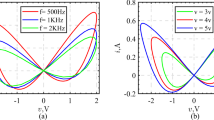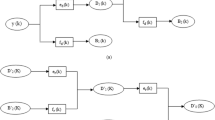Abstract
Healthcare has experienced significant growth in recent years, bringing both advantages and downsides. It is more difficult to provide a precise diagnosis using digitally transmitted medical images in today's digital age. Using an adaptive neuro-fuzzy model and an integrated watermark transformation mechanism, this study proposes a new approach for watermarking medical images based on Region of interest (ROI). Isolating the ROI from the original medical image will be accomplished first using adaptive neuro-fuzzy training techniques. Second, as a consequence of wavelet decomposition, where subbands are exchanged using a logistic mapping based on the magnitude value of each subband, all pixels are exchanged, resulting in medical data that is encrypted and unbreakable. To make the watermark image more stable, singular values are computed, and major components are calculated to prevent false-positive mistakes. When the source and watermark images are changed to separate values, this key variable is used. Finally, through an adaptive authentication code, the scheme suggested tests the strength of protection. Moreover, the authentication code is integrated into the medical image with a new image scale-up process results in better security.












Similar content being viewed by others
References
Cedillo-Hernandez, M., Cedillo-Hernandez, A., Nakano-Miyatake, M., & Perez-Meana, H. (2019). An enhanced hybrid image watermarking scheme for the security of medical and non-medical images based on DWT and 2-D SVD. Future Generation Computer Systems, 101, 1223–1246.
Manikandan, V. M., & Masilamani, V. (2020). A novel image scaling based reversible watermarking scheme for secure medical image transmission. ISA Transactions. https://doi.org/10.1016/j.isatra.2020.08.019
Rayachoti, E., Tirumalasetty, S., & Prathipat, S. C. (2020). SLT based watermarking system for secure telemedicine. Cluster Computing. https://doi.org/10.1007/s10586-020-03078-2
Qasim, A. F., Meziane, F., & Aspin, R. (2018). Digital watermarking: applicability for developing trust in medical imaging workflows state of the art review. Computer Science Review, 27, 45–60.
BS, K. S. (2020). A fuzzy-based ROI selection for encryption and watermarking in the medical image using DWT and SVD. Multimed Tools Applied. https://doi.org/10.1007/s11042-020-09981-5
Gangadhar, Y., Giridhar Akula, V. S., & Chenna Reddy, P. (2018). An evolutionary programming approach for securing medical images using the watermarking scheme in invariant discrete wavelet transformation. Biomedical Signal Processing and Control, 43, 31–40.
Krishnasamy B., Balakrishnan M., Christopher A. (2021). A Genetic Algorithm Based Medical Image Watermarking for Improving Robustness and Fidelity in Wavelet Domain. In: Satapathy S., Zhang YD., Bhateja V., Majhi R. (eds) Intelligent Data Engineering and Analytics. Advances in Intelligent Systems and Computing, vol 1177. Springer, Singapore. https://doi.org/10.1007/978-981-15-5679-1_27.
Favorskaya, M., Savchina, E., & Gusev, K. (2019). Feature-based synchronization correction for multilevel watermarking of medical images. Procedia Computer Science, 159, 1267–1276.
Liu, X., Lou, J., & FangFangwang, H. H. L. (2019). A novel robust reversible watermarking scheme for protecting authenticity and integrity of medical images. IEEE Access, 7, 76580–76598.
Balasamy, K., Krishnaraj, N., Ramprasath, J., & Ramprakash, P. (2021). A secure framework for protecting clinical data in medical IoT environment. Smart Healthcare System Design: Security and Privacy Aspects. https://doi.org/10.1002/9781119792253.ch9
Mothi, R., & Karthikeyan, M. (2019). Protection of biomedical iris image using watermarking and cryptography with WPT. Measurement, 136, 67–73.
Balasamy, K., & Ramakrishnan, S. (2019). An intelligent reversible watermarking system for authenticating medical images using Wavelet and PSO. Cluster Computer, 22, 4431–4442. https://doi.org/10.1007/s10586-018-1991-8
Keshavarzian, R., & Aghagolzadeh, A. (2016). ROI-based robust and secure image watermarking using DWT and Arnold map. International Journal of Electronics and Communication (AEU), 70, 278–288.
Yang, Y., Zhang, W., Liang, D., & Yu, N. (2018). A ROI-based high capacity reversible data hiding scheme with contrast enhancement for medical images. Multimedia Tools Applications, 77, 18043–18065.
Pan, W., Bouslimi, D., Karasad, M., Cozic, M., & Coatrieux, G. (2018). Imperceptible reversible watermarking of radiographic images based on quantum noise masking. Computer Methods and Programs in Biomedical, 160, 119–128.
Campisi, P., Kundur, D., & Neri, A. (2004). Robust digital watermarking in the ridgelet domain. IEEE Signal Processing Letters, 11(10), 826–830.
Ganic, E., & Eskicioglu, A. M. (2005). Robust embedding of visual watermarks using discrete wavelet transform and singular value decomposition. Journal of Electronic Imaging, 14(4), 043004–043004.
Lin, S. D., & Chen, C. F. (2000). A robust DCT-based watermarking for copyright protection. IEEE Transactions on Consumer Electronics, 46(3), 415–421.
Rastegar, S., Namazi, F., Yaghmaie, K., & Aliabadian, A. (2011). Hybrid watermarking algorithm based on singular value decomposition and radon transform. AEU-International Journal of Electronic Communication, 65(7), 658–663.
Praveen Bagadi, K., & Das, S. (2013). Efficient complex radial basis function model for multiuser detection in a space division multiple access/multiple-input multiple-output-orthogonal frequency division multiplexing system. IET Communications, 7(13), 1394–1404.
Tsougenis, E. D., Papakostas, G. A., Koulouriotis, D. E., & Tourassis, V. D. (2012). Performance evaluation of moment-based watermarking methods: a review. Journal of Systems and Software, 85(8), 1864–1884.
Praveen Bagadi, K., & Das, S. (2013). Neural network-based multiuser detection for SDMA-OFDM system over IEEE 802.11n indoor wireless local area network channel models. International Journal of Electronics, 100(10), 1332–1347.
Zhang, X. (2011). Reversible data hiding in encrypted image. IEEE Signal Processing Letters, 18(4), 255–258. https://doi.org/10.1109/LSP.2011.2114651
Acharya, U. R., Deepthi, A., Bhat, P. S., & Niranjan, U. C. (2001). Compact storage of medical images with patient information. IEEE Transactions on Information Technology in Biomedicine, 5(4), 320–323.
Ramprasath, J., & Seethalakshmi, V. (2021). Improved Network Monitoring Using Software-Defined Networking for DDoS Detection and Mitigation Evaluation. Wireless Personal Communications, 116, 2743–2757. https://doi.org/10.1007/s11277-020-08042-2
Wakatani, A. (2002) Digital watermarking for ROI medical images by using a compressed signature image, in Proceedings of the Annual Hawaii International Conference System Sciences, p. 157–163.
Chao, H. M., Hsu, C. M., & Miaou, S. G. (2002). A data-hiding technique with authentication, integration, and confidentiality for electronic patient records. IEEE Transactions on Information Technology in Biomedicine, 6(1), 46–53.
Acharya, U. R., Bhat, P. S., Kumar, S., & Min, L. C. (2003). Transmission and storage of medical images with patient information. Computer in Biology and Medicine, 33(4), 303–310.
Xuanwen, L., Qiang, C., Tan, J. (2003). A lossless data embedding scheme for medical images in the application of e-diagnosis, in Proceedings of the 25th Annual International Conference of the IEEE EMBS, p. 852–855.
Acharya, U. R., Niranjan, U. C., Iyengar, S. S., Kannathal, N., & Min, L. C. (2004). Simultaneous storage of patient information with medical images in the frequency domain. Computer Methods and Programs in Biomedicine, 76, 13–19.
Praveen Bagadi, K., & Das, S. (2013). Neural network-based adaptive multiuser detection schemes in SDMA-OFDM system for wireless application. Neural Computing and Applications, 23(3–4), 1071–1082.
Ramprasath, J., Ramakrishnan, S., SaravanaPerumal, P., Sivaprakasam, M., & ManokaranVishnuraj, U. (2016). Secure network implementation using VLAN and ACL. International Journal of Advanced Engineering Research and Science, 3(1), 2349–6495.
Zain, J.M., Baldwin, L.P., Clarke, M. (2004). Reversible watermarking for authentication of DICOM images, In Proceedings of the 26th Annual International Conference on IEEE EMBS, p. 3237–3240.
Woo, C-S., Du, J., Pham B. (2005). Multiple watermark method for privacy control and tamper detection in medical images, in: Proceedings of the APRS Workshop on Digital Image Computing Pattern Recognition and Imaging for Medical Applications.
Giakoumaki, A., Pavlopoulos, S., & Koutsouris, D. (2006). Multiple images watermarking applied to health information management. IEEE Transactions on Information Technology in Biomedicine, 10(4), 722–732.
J.M. Zain, A.M. Fauzi, A.M., (2006). Medical image watermarking with tamper detection and recovery, In Proceedings of the 28th IEEE EMBS Annual International Conference, p 3270–3273.
Wu, J. H. K., Chang, R. F., Chen, C. J., Wang, C. L., Kuo, T. H., Moon, W. K., & Chen, D. R. (2008). Tamper detection and recovery for medical images using near-lossless information hiding technique. Journal of Digital Imaging, 21(1), 59–76.
Guo, X., & Zhuang, T. (2009). A region-based lossless watermarking scheme for enhancing the security of medical data. Journal of Digital Imaging, 22(1), 53–64.
Guo, X., & Zhuang, T. (2009). Lossless watermarking for verifying the integrity of medical images with tamper localization. Journal of Digital Imaging, 22(6), 620–628.
Nambakhsh, M. S., Ahmadian, A., & Zaidi, H. (2011). A contextual based double watermarking of PET images by the patient ID and ECG signal. Computer Methods and Programs in Biomedicine, 104(3), 418–425.
Ravi Kumar, C. V., & Bagadi, K. P. (2019). Design of MC-CDMA receiver using radial basis function network to mitigate multiple access interference and nonlinear distortion. Neural Computing and Applications. https://doi.org/10.1007/s00521-017-3127-0
Ravi Kumar, C. V., & Bagadi, K. P. (2017). MC-CDMA receiver design using recurrent neural networks for eliminating multiple access interference and nonlinear distortion. International Journal of Communication System. https://doi.org/10.1002/dac.3328
Ramprasath, J., & Seethalakshmi, V. (2021). Mitigation of malicious flooding in software defined networks using dynamic access control list. Wireless Personal Communications. https://doi.org/10.1007/s11277-021-08626-6
Wershi, O. M. A., & Khoo, B. E. (2011). Authentication and data hiding using a hybrid ROI-based watermarking scheme for DICOM images. Journal of Digital Imaging, 24(1), 114–125.
S. Das, S., Kundu, M.K. (2011). Hybrid contourlet-DCT based robust image watermarking technique applied to medical data management, In Proceedings of 4th International Conference on Pattern Recognition and Machine Intelligence, p. 286–292.
Bouslimi, D., Coatrieux, G., & Roux, C. (2012). A joint encryption/watermarking algorithm for verifying the reliability of medical images: application to echographic images. Computer Methods and Programs in Biomedicine, 106(1), 47–54.
Zhang, X., Wang, Z., Yu, J., Qian, Z. Reversible visible watermark embedded in encrypted domain. p. 826–30.
Lavanya, A., & Natarajan, V. (2012). Watermarking patient data in encrypted medical images. Sadhana-Academy Proceedings in Engineering and Science, 37(6), 723–729.
Wu, H. T., Huang, J. W., & Shi, Y. Q. (2015). A reversible data hiding method with contrast enhancement for medical images. Journal of Visual Communication and Image Representation, 31, 146–153.
Kundu, M.K., Das, S. (2010). Lossless ROI medical image watermarking technique with enhanced security and high payload embedding, In Proceedings of 2010 Int. Conf. on Pattern Recognition, IEEE Computer Society, p. 1457–1460.
Tan, C. K., Ng, J. C., Xu, X. T., et al. (2011). Security protection of DICOM medical images using dual-layer reversible watermarking with tamper detection capability. J. Digit. Imag., 24(3), 528–540.
Liu, Y. L., Qu, X. X., & Xin, G. J. (2015). ROI-based reversible data hiding scheme for medical images with tamper detection. IEICE Transaction on Information and System, E98.D(4), 769–774.
Ahmed, M. N., Yamany, S. M., Mohamed, N., Farag, A. A., & Moriarty, T. (2012). A modified fuzzy C-means algorithm for bias field estimation and segmentation of MRI data. IEEE Transactions on Medical Imaging, 21, 193–199.
Ramakrishnan, S., Gopalakrishnan, T., & Balasamy, K. (2011). SVD based robust digital watermarking for still images using wavelet transform, CCSEA 2011. CS IT, 02, 155–167.
Lim, J. S. (2010). Two-Dimensional Signal, and Image Processing. Prentice Hall.
Laws, K. I. (2011). Textured image segmentation. University of Southern California.
Ramprasath, J., & Seethalakshmi, V. (2020). Secure access of resources in software-defined networks using dynamic access control list. International Journal of Communication Systems. https://doi.org/10.1002/dac.4607
Krishnaraj, N., & Smys, S. (2019). A multihoming ACO-MDV routing for maximum power efficiency in an IoT environment. Wireless Personal Communications, 109(1), 243–256.
Sakthivadivel, M., Krishnaraj, N., & Ramprakash, P. (2013). Utilization of big data in oil and gas industries using Hadoop MapReduce technology and HiveQL. Global Journal of Multidisciplinary and Applied Sciences, 1(2), 52–57.
Krishnaraj, N., Kumar, R.B., Rajeshwar, D., Kumar, T.S. (2020). Implementation of Energy-Aware Modified Distance Vector Routing Protocol for Energy Efficiency in Wireless Sensor Networks, IEEE International Conference on Inventive Computation Technologies, p. 201–204.
Ramprakash, P., Sakthivadivel, M., Krishnaraj, N., & Ramprasath, J. (2014). Host-based intrusion detection system using sequence of system calls. International Journal of Engineering and Management Research, Vandana Publications, 4(2), 241–247.
Author information
Authors and Affiliations
Corresponding author
Ethics declarations
Conflict of interest
The authors declare that they have no conflicts of interest.
Additional information
Publisher's Note
Springer Nature remains neutral with regard to jurisdictional claims in published maps and institutional affiliations.
Rights and permissions
About this article
Cite this article
Balasamy, K., Krishnaraj, N. & Vijayalakshmi, K. An Adaptive Neuro-Fuzzy Based Region Selection and Authenticating Medical Image Through Watermarking for Secure Communication. Wireless Pers Commun 122, 2817–2837 (2022). https://doi.org/10.1007/s11277-021-09031-9
Accepted:
Published:
Issue Date:
DOI: https://doi.org/10.1007/s11277-021-09031-9




